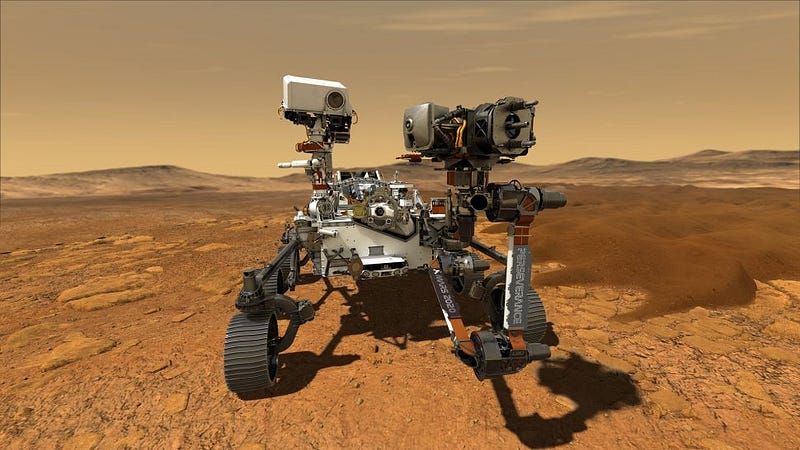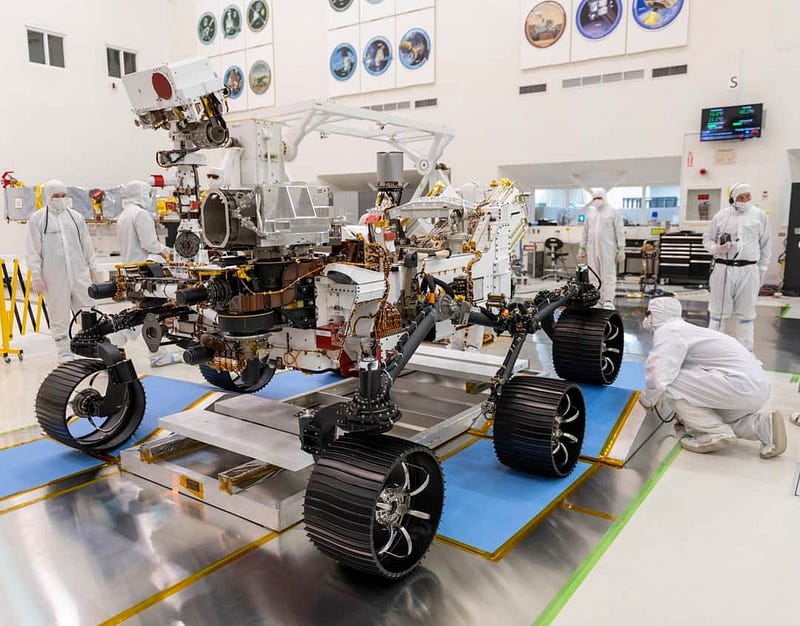Exploring Life on Mars Time: A Shift of 40 Minutes Daily
Written on
Chapter 1: Understanding Mars Time
What would happen if your daily schedule shifted by 40 minutes? This is a reality when aligning our Earth-based routines with Martian time.

Mars operates on a different time system. While Earth has a 24-hour day, a day on Mars, known as a Sol, lasts 24 hours, 39 minutes, and 35 seconds. This means that if you're adhering to Martian time, you’ll find yourself starting work around 40 minutes later each day.
The Mars 2020 mission, featuring the Perseverance rover, landed on February 18, 2021. The dedicated team at NASA’s Jet Propulsion Laboratory (JPL) in Pasadena, California, has been responsible for the design, construction, and operation of this rover. Consequently, JPL staff will adapt to a schedule that sees them arriving at work roughly 40 minutes later every day.
While 40 minutes may seem trivial, it quickly alters the perception of time. Midnight becomes noon, and 2 PM turns into 4 AM. Your evening grocery runs may coincide with closed stores, and maintaining a separate clock to keep track of Earth days versus Martian sols becomes necessary. The internal body clock gets disrupted, making jet lag a constant state of being. Essentially, living on Martian time is akin to adjusting two time zones westward every three days.
Section 1.1: The Historical Context of Mars Time
Mars Time originated during the Pathfinder mission, which introduced the Sojourner rover. For that mission, adopting Martian time was crucial to maximizing the rover’s lifespan and optimizing data communication. Teams have since continued this practice, waking and sleeping according to the rover's schedule. This effort is vital for effective communication across vast distances in the solar system.

Communication between Earth and Mars is dictated by the speed of light, traveling at approximately 182,282 miles per second (or 299,794 km per second). This speed influences the time it takes for signals to traverse the distance between the two planets, which can vary significantly based on their positions in their respective orbits.
- Closest approach: ~ 3.03 minutes
- Farthest approach: ~ 22.4 minutes
- Average delay: ~12.5 minutes
Section 1.2: The Perseverance Rover and Its Operations
The Perseverance rover's mission started on February 18, 2021, with its operations team fully committed to working on Mars Time for the initial three months. During this period, the team will align their waking and sleeping schedules with those of the rover. After this phase, they will transition to a modified schedule that aligns more closely with Pacific Time, typically between 8 AM and 8 PM.

Chapter 2: Daily Life Adaptations on Mars Time
The first video titled "I read for 45 minutes every single day... like they did before TV was invented" discusses the importance of time management in a world filled with distractions.
The second video, "What happens if you only workout 30 minutes per day," explores how small adjustments in daily routines can impact health and productivity.
Interested in opportunities at NASA? Check out insights and advice on securing an internship with them.